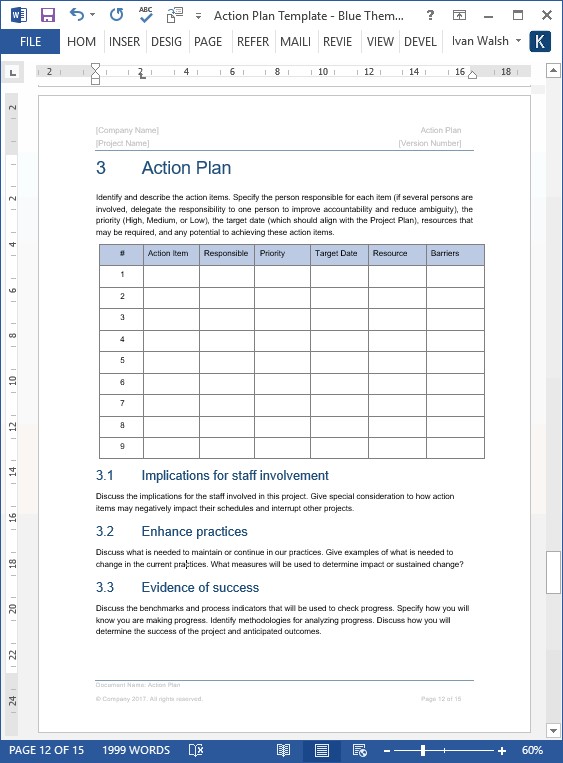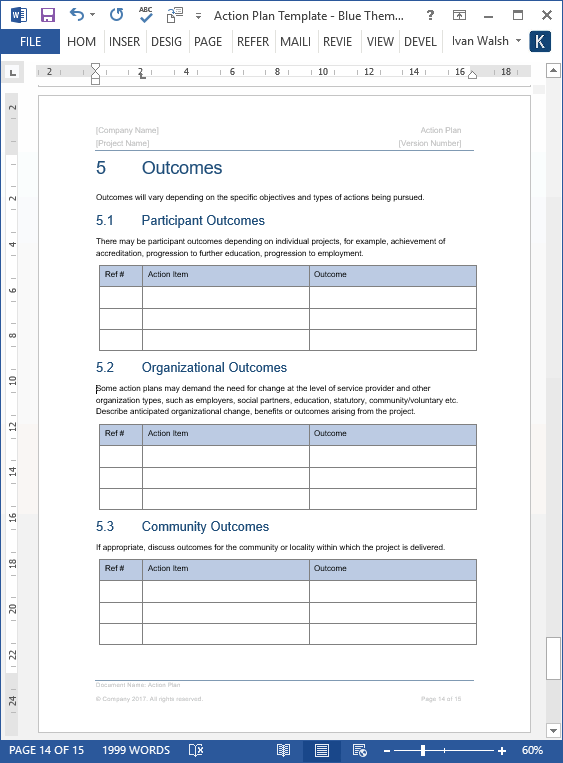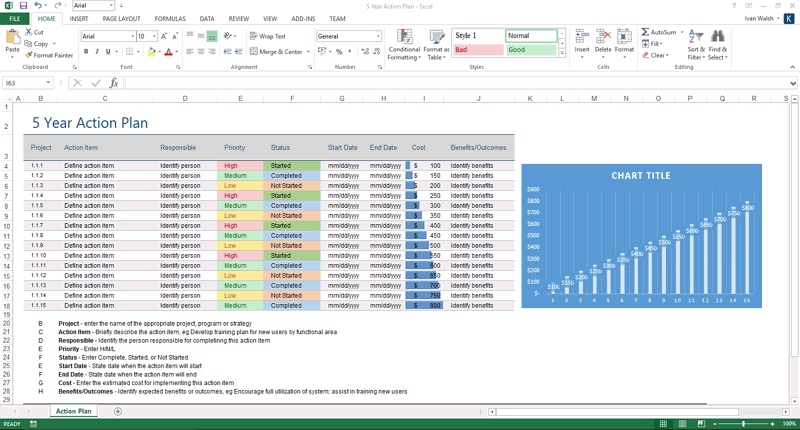Action Plan Templates
10-Step Action Plan to Increase ‘Offline’ Sales
It’s easy to confuse Action Plans and To Do lists? From one angle, they both have the same objectives. What I find is that I often end up with lots of to do lists, which are really hard to keep track of. And, it’s very difficult to see if they’re working or making any real difference.
After all, as soon as you complete one to do list, you start another one. So, it becomes a bit of a vicious circle. You’re creating, doing, and deleting tasks. While that’s fine – and it has its place – but it’s not a plan. It’s just an activity, right? A way of keeping tabs on different tasks.
However, an action plan, for example for your next product launch, is more strategic.
The 10 Step Sales Action Plan
One way to look at a sales action plan is to think of stepping stones. After you complete one task, you move to the next step. And then the next step…
With this in mind, here’s a ten step framework for developing an action plan.
Action Step 1: Identify your top 10 customers
Remember the 80-20 rule? Most of your sales, contracts, or freelance work will come from this 20%. For this reason, shortlist your top ten customers and see where and how you can provide better services to them.
For example, I write white papers for B2B clients.
After they know me a little better, I may suggest that I can help with other writing projects, for instance, developing web content, landing pages or email newsletters.
So, what often starts as a simple white paper (i.e. 3 days work) turns into a longer working relationship. Maybe you can think of something along the same lines.
Download the Action Plan template
Action Step 2: Identify your top 10 prospects
Next, look at the ten prospective customers you’d like to work with. If you run your own business, it’s easy to fall into the trap of spreading your net too wide.
“I’ll give them a try.”
“Why don’t I send them a brochure?”
“It’s not my area but why not…”
The problem here is that you dilute your efforts. Instead of focusing on where you’re strong, you expand into new areas where you have less expertise… and usually get fewer results.
Instead:
- Focus on areas where you can generate real business opportunities
- Look at micro niches that are under-served
- Identify sectors where you could add more value that your competitors
Action Step 3: Identify your top 5 team members
To do this, you need a strong team.
There’s a saying in Holland: “If you want to get something done, give it to a busy person.”
Your business is probably the same. You have a handful of really committed team workers that you can rely on. When writing your action plan, see if you can get these on board. Getting the right people is essential. It doesn’t matter how great your product is, if your team aren’t up to scratch, it won’t work.
Download the Action Plan template
Action Step 4: Create a plan of attack
The next step is to work out a plan that’s concise and easy for others to follow. Don’t make it so complicated that you have to teach people how it works.
- Monday – Email, Telephone, Call, Visit in person
- Tuesday – Email, Telephone, Call, Visit in person
- Wednesday – Email, Telephone, Call, Visit in person
- Thursday – Email, Telephone, Call, Visit in person
- Friday – Email, Telephone, Call, Visit in person
Create a simple schedule and identify who you will call each day of the week. How are you going to contact them and what steps need to be in place to follow-up?
Action Step 5: Generate Publicity
Don’t be shy about promoting yourself. Your competitors aren’t!
Look for ways to generate publicity both offline and online:
- Offline Publicity – run training courses, setup local events, join chamber of commerce events, write for the local newspaper, sponsor an event
- Online Publicity – use webinars, setup Facebook business pages, join online business networks, engage with others on Social Media media, develop a blog that shows your expertise, write guest posts and share useful information with others
Download the Action Plan template
Action Step 6: Build Your Brand
Branding doesn’t have to be complicated. Instead, get the following in place:
- Define your message – what do you offer in one sentence? Avoid jargon, clichés and buzzwords. Focus on the benefits you provide.
- Create a business identify – hire a graphic designer (I use ODesk) and get a nice set of logos developed.
- Create a marketing kit – develop a set of case studies, white papers, success stories and other sales documents that you can share with prospective clients.
Action Step 7: Network! Network! Network!
For example, your success as a freelancer isn’t only based on the high quality of your work (that comes later) but on the network you create to find leads and build goodwill in the business community.
Without a network (offline and online), it’s very difficult to get on your customer’s radars. Look for opportunities for get more “face time” with prospects.
This can be offline, i.e. at Chamber of Commerce events, or online in LinkedIn or other business networking sites.
Action Step 8: Grow Ears
Grow ears! What does that mean? It means you find ways to ‘listen’ and hear what’s going on in your industry.
I used to buy trade magazines and journals but stopped the subscriptions.
Action Step 9: Refine the Plan
Don’t be afraid to change the action plan if you feel it needs tweaking. Listen to your customers, get feedback from your team and refine it as needed. Sometimes a small change is all that’s needed to correct things.
Likewise, if you run a website, use Google Analytics to setup goals. Add these to the timeline and monitor the results. Did you get more traffic to the landing page as expected? If not, what do you need to change? Text, images, or call to actions?
Download the Action Plan template
Action Step 10: Reward Yourself
Look for ways to rewards yourself every now and then. It doesn’t have to be something very big, just a reminder that you’ve done a good job and deserve a little treat.
One way I do is to give myself a few hours off every Friday morning and walk by the sea. It’s a chance to calm down after the hectic week and gain a little perspective. It also helps to get away from the computer, phone, email and other attention grabbers.
Leave them alone and go for a long walk. Your email will still be there when you get back.
Conclusion
Instead of seeing your action plan as something fixed, think about action planning as a process. What can I do to improve the process?
When you see it in these terms, the action plan template is the building block upon which you develop your business.
Does that make sense? Let me know what you think.







